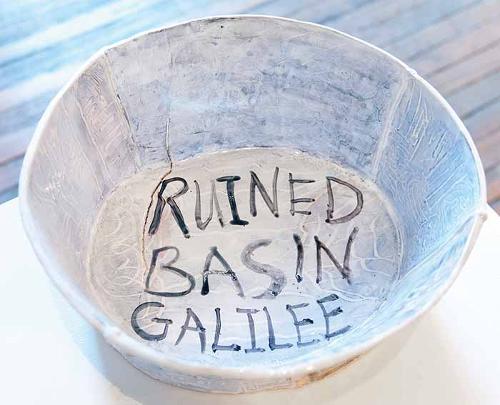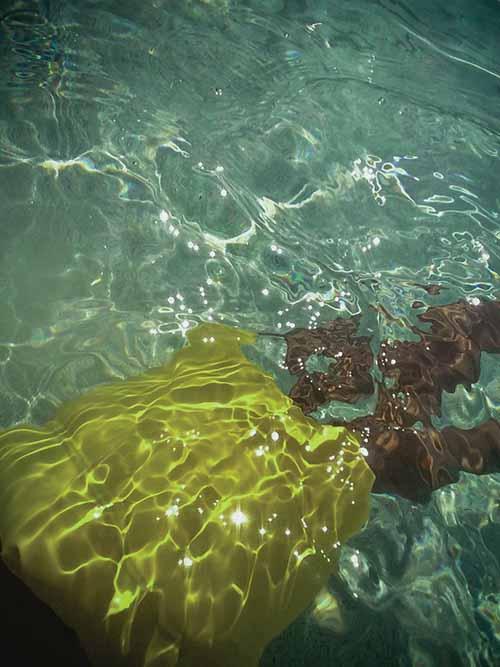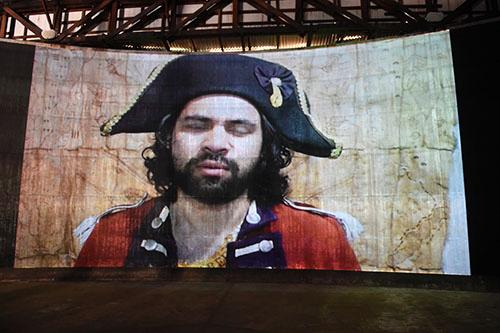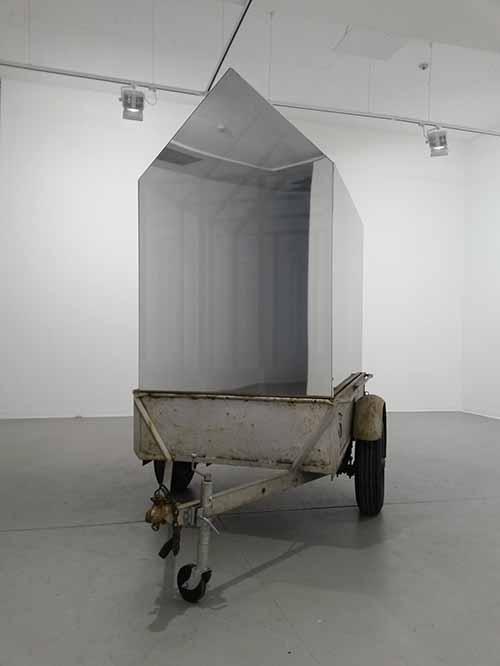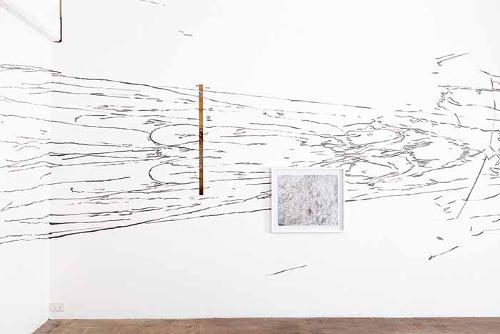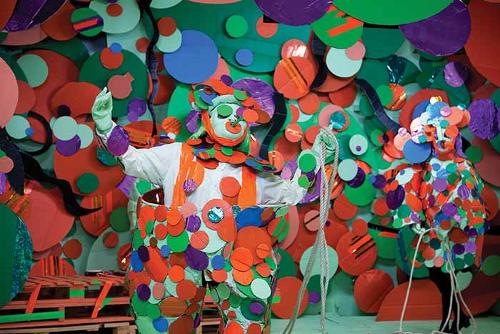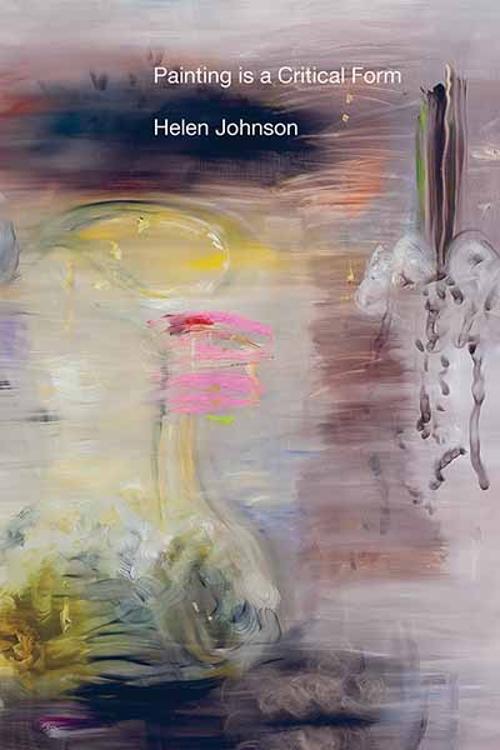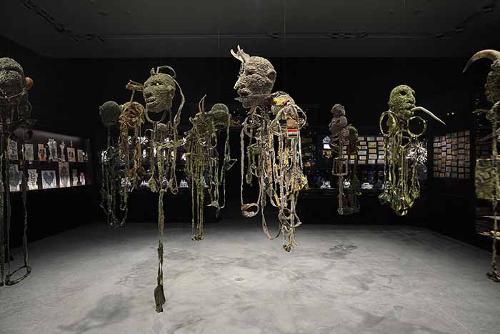
Garnkiny to Ganyu was an outcome of an Australia Council curatorial fellowship enabling an emerging curator to work for a year in a public art gallery. Clare Armitage moved from Canberra to Katherine in the NT to work at the Godinymayin Yijard Rivers Arts & Culture Centre (GYRACC), mentored by the Centre's director Cath Bowdler. The fellowship was a one-off initiative that recognised the need for more professional pathways for emerging curators, the sort of initiative that seems a pipedream now amidst the current federal arts funding fiasco.
The exhibition was a perfect platform for local artist Bill Yidumduma Harney whose night sky paintings and related astronomy form a significant dimension of his practice, as shown through his 2003 publication Dark Sparklers (co-authored with Hugh Cairns). It also prepares the way for his forthcoming (2016) retrospective at GYRACC, guest-curated by Margie West. As with many of the artists, Harney was represented by a single work.
Even more iconically night-sky affiliated perhaps are the works of Warmun-based artist Mabel Juli and the late Gulumbu Yunupingu from Yirrkala in north-east Arnhem Land, both included in the exhibition and commemorated in its title through Mabel’s Gankiny (Moon) to Gulumbu’s Ganyu (Stars), a symbolic "West to East“ passage, as Armitage describes in her catalogue essay, evoking the exhibition’s geographic and cross-cultural trajectory.
Moon and star are luminously, lyrically present in Mabel’s work, represented in the exhibition by an ochre painting and print. Gulumbu was represented by a single striking linocut print of a ganyu-studded sky in reds and pinks. Its relative modesty in view of the repertoire of her ganyu-related works, including monumental bark paintings and sculptures, was refreshing. It signalled a confidence and pragmatism about Armitage’s curatorial strategy of selecting strong, representative work in any size and medium, affirming the innate strength of modesty and quietness. Other prints were included and the black-and-whiteness of many of them suited a stark night sky aesthetic. Revisiting Billy Missi’s sizeable Kulba Yadai (Old Lyrics) linocut print again was like seeing an old friend, as was the encounter with the linocut print by Arone Meeks, an artist of longstanding distinction whose work is not often seen in the NT. One correction: Meeks does not belong to a Torres Strait Islander wave of linocut artists, as suggested by Armitage’s essay, having emerged instead with the rise of the Boomalli Aboriginal Artists Cooperative in Sydney in the late 1980s, and expressing a particular connection through his art to Kuku Midigi country around Laura, his birthplace, in Far North Queensland.
The exhibition hit many big, high-key notes as well. It included two Darwin photographers: Fiona Morrison with two large and masterful prints from her recent Yéqŭ series of street-night images taken in Huantie, a former industrial suburb of Beijing; and two time-lapse prints by Louise Law. The exhibition’s mix of known and lesser-known artists added to an overall sense of discovery and wonderment.

